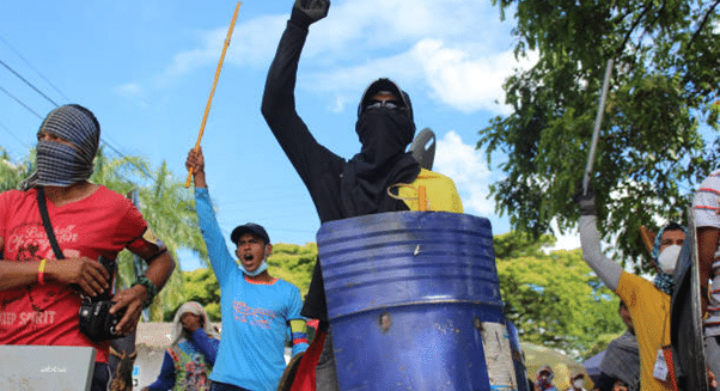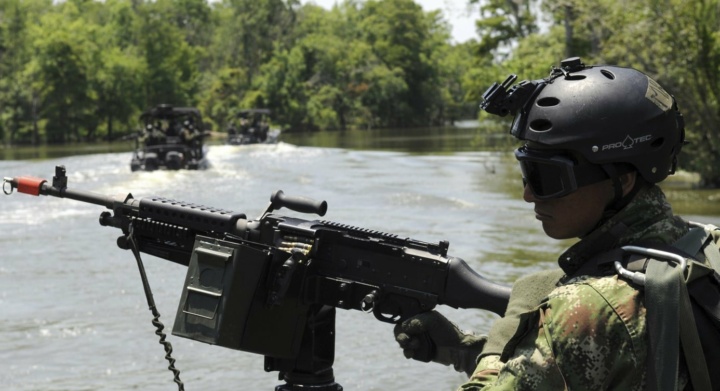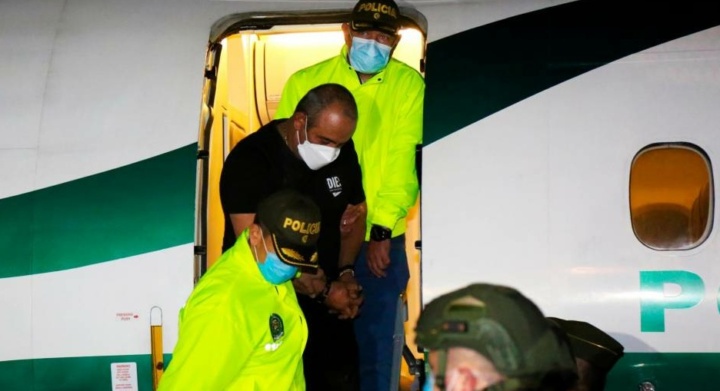During the last few years, there have been multiple protests in Colombia against the government. Thousands of people have taken to the streets to protest against issues such as tax reforms, government management, and police performance. However, although the ability to protest is a legitimate right, there have also been events that have affected security conditions in the country. Colombian authorities have indicated that the National Liberation Army (ELN), one of the oldest terrorist groups in the country, is likely participating in the protests.
The Protests
Colombia had serious episodes of protests and riots throughout 2019, 2020, and 2021. Their objectives and motives were distinct, but they shared in their international recognition for their levels of violence and destruction.
The first major protest during the government of President Iván Duque was the national strike of November 21, also known as 21N. Some of the reasons that led to these protests included economic proposals, such as eliminating the state pension fund Colpensiones and increasing the retirement age. Also, protesters demanded more investment in public education, combating corruption in several universities, effective protection measures for indigenous and social leaders, as many have been assassinated, and the full implementation of the peace agreement with the FARC, which was reached in 2016. The protests lasted until the beginning of 2020 and left approximately 769 people injured, more than 100 arrested, and six dead.
The next major series of protests in Colombia were those against the death of Javier Ordoñez in September 2020. The main reason for the protest was the murder of Javier Ordoñez by members of the national police in Bogota. Throughout September, there were clashes between protesters and police and multiple burnings of police stations, known as CAI. The protests resulted in 13 deaths, 72 CAI affected, and 581 injured, 75 of which were the result of firearms.
Finally, the most recent wave of protests occurred in April 2021 and was labeled the National Strike. These protests were primarily against a tax reform promoted by the government. The protests were characterized by their levels of violence and destruction. In fact, according to the United Nations Office for the Coordination of Humanitarian Affairs (OCHA), between April 28 and July 31, reports attributed 63 deaths to the protests. To date, the UN has verified 46 deaths, of which 44 were civilians and two were police; 76% of victims died from gunshot wounds.
The Infiltration of the ELN
Colombian authorities have indicated that there is a high possibility that ELN militants infiltrated the protests to destabilize the country, attack members of the security forces, and cause damage to private and public property.
According to the Colombian Ministry of Defense, the protests against police brutality in September 2020 were infiltrated by the ELN and other terrorist groups. The then Minister of Defense, Carlos Holmes Trujillo, stated that the acts of violence were systematic and aimed at destroying public property and citizen infrastructure dedicated towards security.
A few days after the Defense Ministry’s statements, the ELN acknowledged its participation in the protests against police brutality. Through a video on social networks, alias “Uriel,” an ELN leader, stated that the group sought to “put an end to the torture and death centers called CAI (Immediate Action Commandos) of the police”; also that the ELN’s urban militancy actively participates in protests and incites the use of homemade explosive devices.
ELN involvement in protests was also registered in the 2021 National Strike. In June 2021, ELN member alias “Fabian” was captured and storage devices were seized. The devices contained instructions from the ELN central command to inspire acts of vandalism, instructions to attack the police, and money transfer orders for individuals to attack security forces.
Eventually, the Colombian Ministry of Defense indicated that the ELN and FARC dissidents continue to act with the intention of financing violent and criminal activities, including vandalism and violence across Cali and Bogota. Also, reports indicate a potential presence of ELN members at the anti-government protests on July 20th, 2021.
Finally, in 2021 the Colombian National Police found evidence that the ELN had given protesters $70 million to organize attacks against the police and execute riots.
Urban Terrorism: A Challenge that Must be Addressed
The evidence that the ELN was involved in the protests in Colombia seems conclusive. Financing, infiltration of riots, incitement to cause destruction, and the distribution of propaganda are just some of the actions carried out by the ELN.
The ELN’s actions are of particular relevance as they demonstrate the existence of a challenge for the country’s authorities: urban terrorism that can be executed in Colombia’s main cities.
This modality of terrorism is particularly dangerous for the security of cities due to its characteristics. Urban terrorism can be carried out by a small number of people, its perpetrators can camouflage themselves among other demonstrators, it causes great damage to security forces for a low cost, and terrorists can use their propaganda to legitimize it because it occurs within citizen protests.
For this reason, it is necessary that Colombia, and other countries in the region with similar situations, strengthen their intelligence, terrorist identification, terrorist financing, and anti-riot capabilities to mitigate the risk posed by the presence of guerrillas and terrorist groups acting within citizen protests. State action must protect the lives of demonstrators, and public and private property, and avoid the deterioration of security conditions across the country.
Daniel Felipe Ruiz Rozo, Counter-Terrorism Research Fellow



